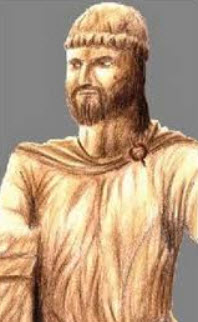Even if the Mongols invented the Stirrup, they won't show up in Civ3, which means China is the next in line.
Firaxis made couple of mistakes in the decription of China's unique unit:
1. Mongols were not the first one to use heavy cavalry against China. Their ancestors, the Huns, had massed heavy cavalry well before 200BC. The wars conducted by Emperor Wu of Han were mainly fought with heavy cavalry, and that happened at least 100BC, 1300 years earlier than 12th century.
2. Mongol cavalry can't possibly be more heavier than the plate-armored Western knights. What set Mongols apart from the rest of world was their tactics, mobility, discipline, and rider's skill. Also, horse archers were the main strengh of the Mongol cavalry. How could an archer work well in heavy armor?
Firaxis made couple of mistakes in the decription of China's unique unit:
1. Mongols were not the first one to use heavy cavalry against China. Their ancestors, the Huns, had massed heavy cavalry well before 200BC. The wars conducted by Emperor Wu of Han were mainly fought with heavy cavalry, and that happened at least 100BC, 1300 years earlier than 12th century.
2. Mongol cavalry can't possibly be more heavier than the plate-armored Western knights. What set Mongols apart from the rest of world was their tactics, mobility, discipline, and rider's skill. Also, horse archers were the main strengh of the Mongol cavalry. How could an archer work well in heavy armor?




 ), but in Civ3 (and Civ1 & Civ2) you are rewriting history, often on a randomly generated world, so who knows how things really turn out.
), but in Civ3 (and Civ1 & Civ2) you are rewriting history, often on a randomly generated world, so who knows how things really turn out.
Comment